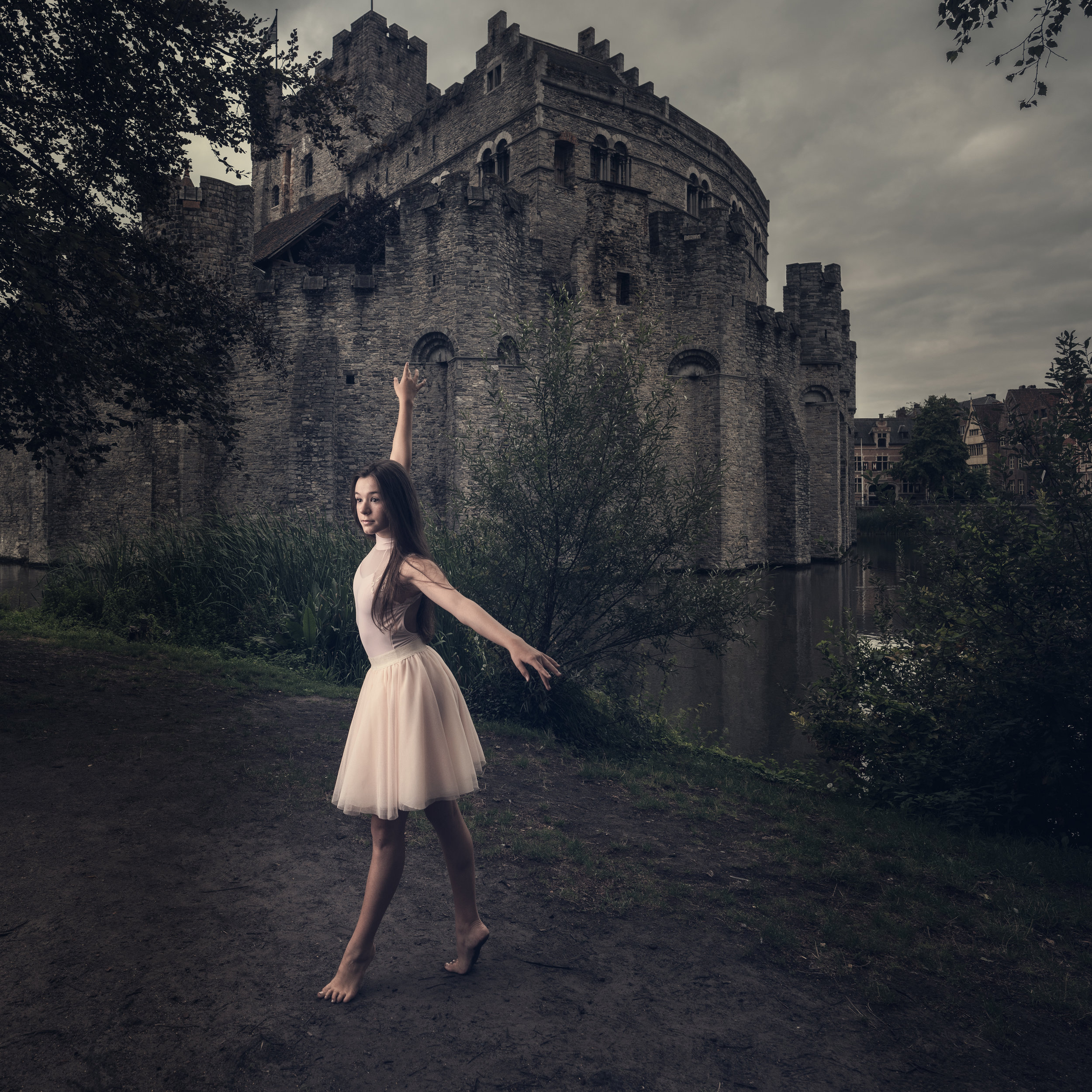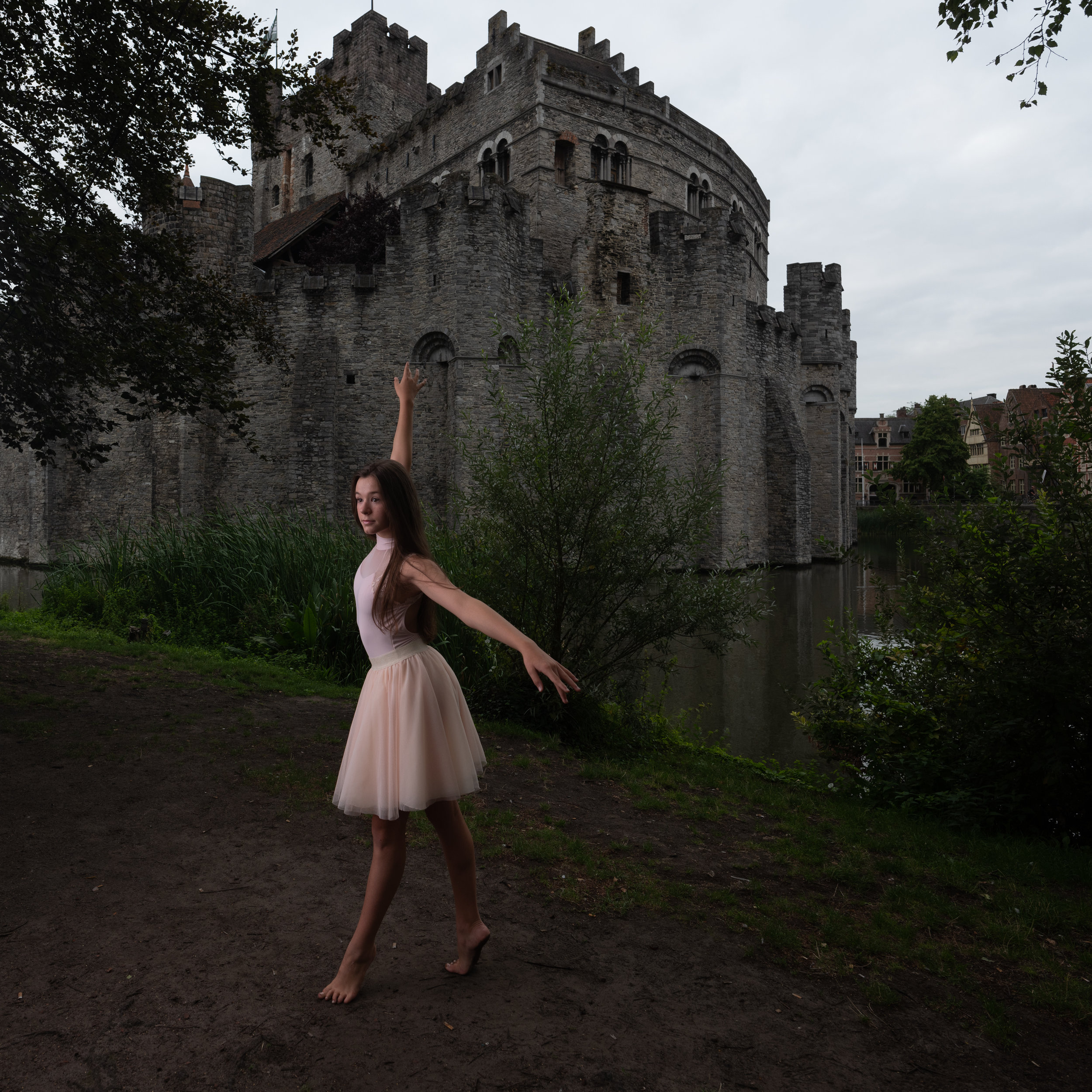In the previous blog post, I introduced you to the SMDV Speedbox Mega 180. I took it for a spin - and if it had been any windier, it would have taken me for a spin - in the city of Ghent, Belgium, where I live. We made about 5 different set-ups in a little over two hours time because our talented dancer Lana had to be back home in time for rehearsals! When you’re a bit in a rush, you don’t want to spend half of whatever time you have setting up your lights. In part 1, I showed you that I managed to set up the Mega 180 in under a minute - quite a feat for a softbox this size and that has everything to do with its design and not with my two left hands :-) In the video below, you see us creating the first shot. I call this my ‘warming up shots’. It’s a safe shot that technically isn’t too challenging and we made it in a quiet area. This allows for the model, the team and myself to get to know each other and get in the flow of things, without too many tourists looking along. It’s also reassuring to have at least one useable shot right from the get-go.
The essential guide to working with small and big flashes on location. This ebook will show you all you need to know to create killer flash images.
One of the things I love about this SMDV Mega 180 is that it creates super soft light, even for full-length portraits. I even helped it a bit, by putting it in the frame and then masking it out afterwards, a technique I’m using more and more.
Below, you can see a high-speed behind-the-scenes video of the actual shoot and the retouching. I was shooting on the GF23 on my trusted Fujifilm GFX 50S because I wanted to take in the entire castle. But working with such a wide angle caused a bit of distortion on her left arm and hand, which is why you’ll see me use the Liquify tool in Photoshop. The colour grading is done through one of my Creative Profiles for Lightroom Classic CC, Photoshop CC 2018 and Camera Raw.
The Fujifilm GFX 50S is my favourite camera ever. You can do just about anything with the files that come out of it. The potential for shadow recovery without noise is amazing. If you don’t believe me, check out this blog post, where I recuperate a four-stop underexposed image… But be warned. I’ve know at least one photographer personally who bought a GFX after reading that blog post :-)
The GFX has made me slow down and work on a tripod more. This is my Sirui Traveller T2204-XL. You can also see me use the right-angle finder on my camera. I love that accessory. I’m wearing a Spider Holster and the GFX has a Spider plate with an Arca Swiss compatible base plate. It makes me look like a bit like Robocop but I’m past the desire of looking fashionable when I’m shooting. I’ll leave that to my models :-) Image © Frank Verheye.





